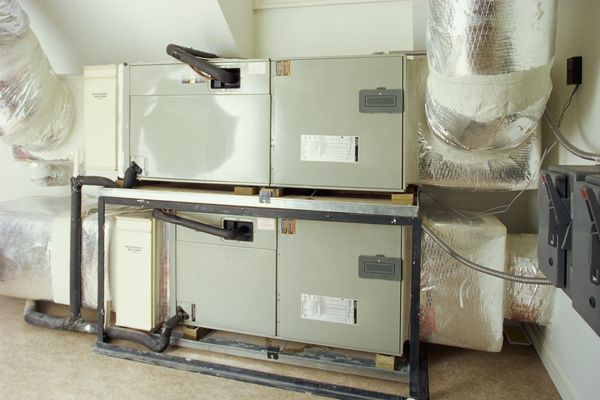Contact us for a FREE quote!
Sales & Services

HVAC System Design
HVAC system design is a meticulous process involving the strategic planning and engineering of heating, ventilation, and air conditioning systems to provide optimal climate control within a building. The selection of an appropriate HVAC system type, such as split, packaged, VRF follows this assessment. Zoning, air distribution, ventilation, and equipment sizing are carefully determined to ensure efficiency and even temperature distribution. Ultimately, a well-executed HVAC design combines engineering expertise with a commitment to energy efficiency, indoor air quality, and overall occupant comfort.

Procurements
Proper procurement practices are crucial to ensure the quality, efficiency, and reliability of the HVAC infrastructure. Here's a brief overview of key considerations in HVAC procurement:
- Specifications and Requirements: : Clearly define the technical specifications and performance requirements for HVAC equipment. This includes factors such as capacity, energy efficiency, noise levels, and compliance with industry standards. .
- Vendor Selection : Evaluate and select reputable vendors or manufacturers based on their track record, reliability, and the ability to meet project specifications. Consider factors such as product quality, warranty support, and after-sales service.
- Cost Considerations : Obtain competitive bids or quotes from multiple suppliers to ensure cost-effectiveness. Consider the total cost of ownership, including installation, maintenance, and energy efficiency over the equipment's lifespan.
- Regulatory Compliance : Ensure that the HVAC equipment complies with relevant local and international standards, codes, and regulations. This includes energy efficiency standards, safety requirements, and environmental regulations.
- Sustainability and Energy Efficiency : Prioritize energy-efficient HVAC systems and components to reduce operational costs and environmental impact. Look for equipment with energy efficiency certifications and consider the long-term benefits of sustainable solutions.
- Delivery and Lead Times : Confirm delivery schedules and lead times with suppliers to ensure timely procurement and installation. Consider factors such as project deadlines and construction timelines.

Executions/Installations
HVAC execution involves the physical implementation of the designed heating, ventilation, and air conditioning systems within a building. This encompasses the installation of HVAC units, ductwork, vents, and controls according to the detailed design specifications. Skilled technicians carry out the assembly of components, ensuring proper sizing, placement, and connection of equipment. Ductwork is meticulously installed to guarantee efficient air distribution, while ventilation systems are integrated to meet air quality requirements.

Testing's/Comissionings
During the testing phase, .the HVAC system are assessed to verify their individual and collective functionality. This includes conducting performance tests on heating and cooling equipment, airflow measurements in ductwork, and calibration of control systems. Technicians check for proper equipment sizing, temperature differentials, and pressure levels to ensure that each component operates according to design specifications. Testing helps identify and rectify any issues before commissioning.
Commissioning involves the systematic verification and fine-tuning of the entire HVAC system. This process includes adjusting controls, balancing air and water flows, and verifying that sensors and actuators operate correctly. The aim is to achieve optimal performance, energy efficiency, and occupant comfort. Additionally, commissioning ensures that the HVAC system integrates seamlessly with the building management system (BMS) and other relevant systems. The process concludes with the delivery of a comprehensive commissioning report, detailing system performance, test results, and any necessary adjustments made during the commissioning phase.

Validations/Documentations
HVAC system validation involves a systematic and documented process to confirm that the system meets the specified design requirements and operates as intended. The validation process typically includes:
- Design Qualification (DQ): Design Qualification ensures the HVAC system is designed to meet the specific requirements of a facility or project. It is a critical step in the overall validation process and involves confirming that the design meets predefined standards and criteria
- Installation Qualification (IQ): Verification that all components are installed correctly according to design specifications and manufacturer's guidelines.
- Operational Qualification (OQ): Testing to ensure that the HVAC system operates within its defined parameters. This includes performance testing, control system testing, and functional checks.
- Performance Qualification (PQ): Confirming that the HVAC system consistently performs according to the specified requirements under normal operating conditions.

AMC/Repairs
The purpose of an AMC for HVAC systems is to ensure regular maintenance, performance checks, and timely repairs to keep the heating, ventilation, and air conditioning systems in optimal working condition. Here are key aspects of an AMC for HVAC:
- Scheduled Maintenance: The contract outlines a schedule for routine maintenance activities. This can include tasks such as cleaning filters, checking refrigerant levels, inspecting electrical components, lubricating moving parts, and testing system controls.
- Emergency Repairs: The agreement may cover emergency repairs in case of system breakdowns. This ensures a prompt response from the service provider to address critical issues and minimize downtime.
- Priority Service: AMC holders typically receive priority service, meaning their requests for maintenance or repairs are prioritized over non-contract customers. This helps in ensuring a quicker response to issues.
- Performance Checks: Regular performance checks are conducted to assess the efficiency of the HVAC system. This includes verifying temperature control, airflow, and overall system functionality.
- Replacement of Parts: The contract may specify the replacement of certain components or parts that wear out over time. This can include filters, belts, sensors, or other consumables.
- Contract Duration: The contract typically covers a period of one year, but the duration can vary. Renewal options are often available for continued service.
Frequently Asked Questions
Please contact us if you cannot find an answer to your question.
You will receive a written scope of your project, including what permits will be required, a basic timeline, and whatever open questions remain for you to decide on before we can begin.
You should have your systems serviced right before each cooling and heating season starts.
Add some attic ventilation! This will reduce moisture and lower your cooling costs.
This website uses cookies.
We use cookies to analyze website traffic and optimize your website experience. By accepting our use of cookies, your data will be aggregated with all other user data.